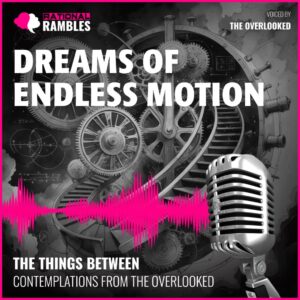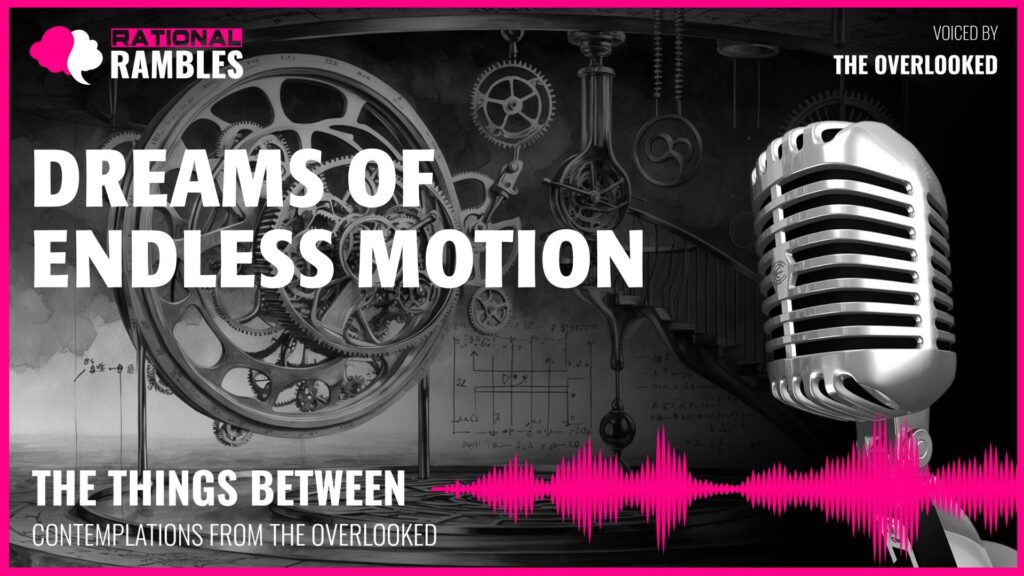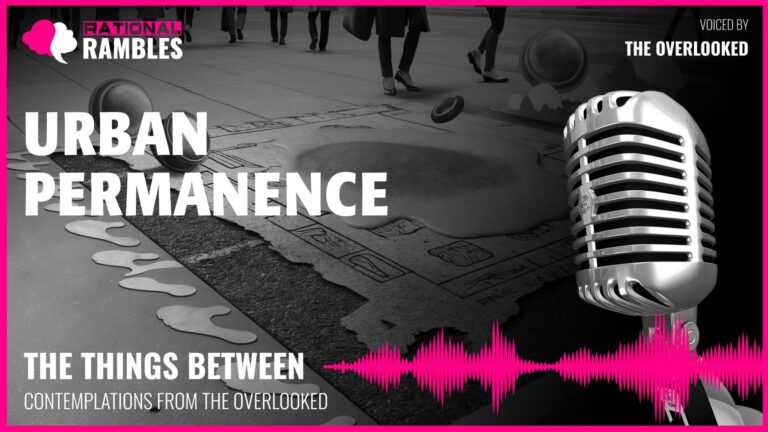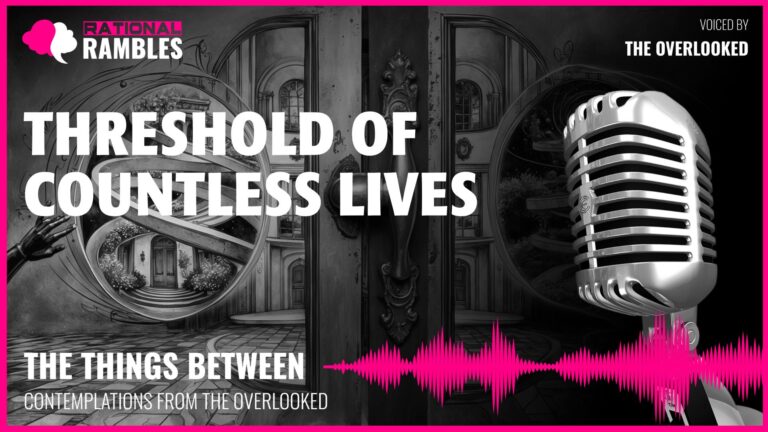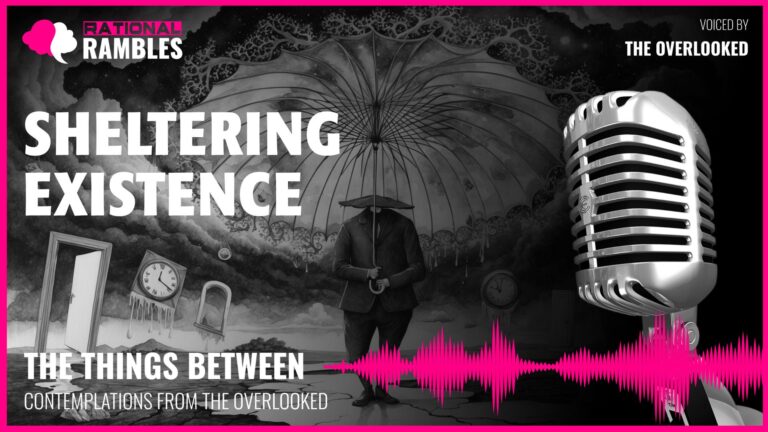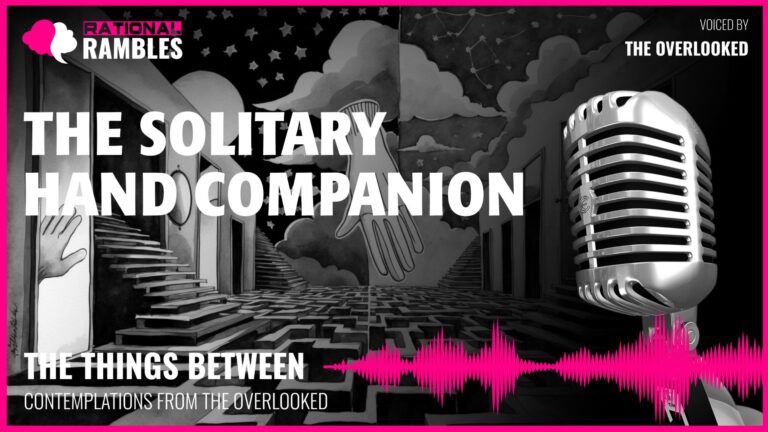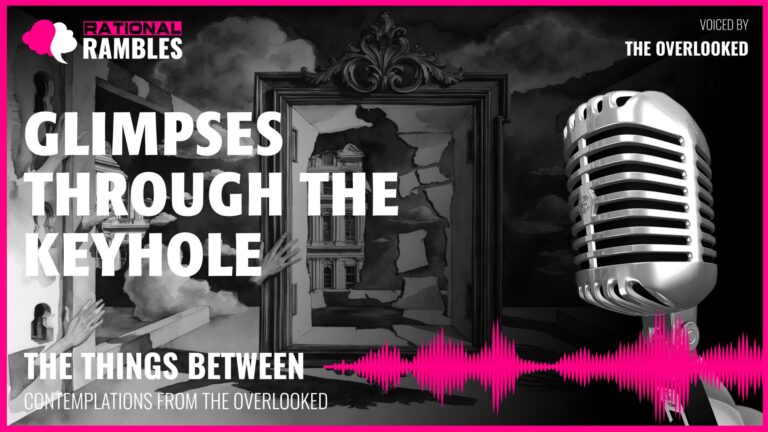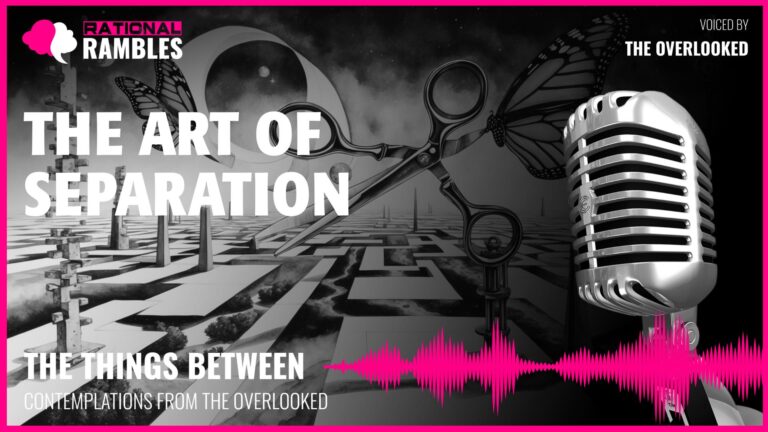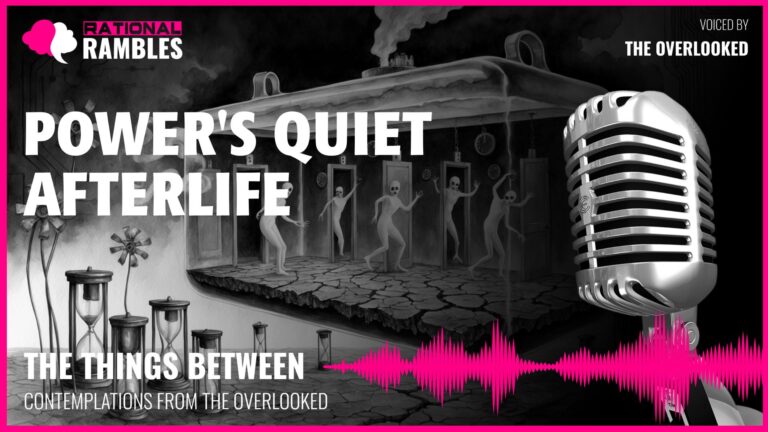The Paradox of Perpetuity: Human Aspirations in an Entropic Universe
Introduction
Throughout the history of human innovation, certain endeavors have captivated our collective imagination with particular intensity. Among these, few have held as persistent an allure as the pursuit of perpetual motion—a theoretical mechanism that, once set in motion, would continue indefinitely without additional energy input. This concept represents more than a mere engineering challenge; it embodies humanity’s fundamental desire to transcend natural limitations, to create something that exists beyond the constraints of physical laws, and perhaps, to glimpse a form of mechanical immortality.
The perpetual motion machine stands as a profound philosophical paradox. According to our understanding of thermodynamics, particularly the conservation of energy and the inevitable increase of entropy, such a device cannot exist. Yet the concept persists in our imagination, beckoning from the borderlands between the possible and impossible. What drives this enduring fascination? What deeper truths might we uncover by examining this peculiar obsession with creating the uncreatable?
This article explores the rich philosophical terrain surrounding perpetual motion—not merely as a scientific impossibility, but as a metaphorical vessel carrying humanity’s most profound aspirations and existential questions. Through examining this concept, we encounter fundamental inquiries about the nature of perfection, our relationship with entropy and time, the boundaries between the possible and impossible, and ultimately, what it means to exist in a universe that seems designed to wind down while we persistently dream of things that never stop.
The Ontology of the Impossible
To contemplate perpetual motion is to wrestle with a curious ontological question: what is the nature of existence for something that cannot exist? The perpetual motion machine occupies a unique philosophical space—physically impossible according to our understanding of natural laws, yet conceptually vivid and persistent in human imagination.
Beyond Physical Impossibility
The traditional view holds that perpetual motion machines violate the first and second laws of thermodynamics—energy cannot be created or destroyed, and systems inevitably move toward greater entropy. Yet this physical impossibility has never diminished humanity’s fascination with the concept. This suggests that the perpetual motion machine exists not as a physical entity but as what philosophers might call an “intentional object”—something toward which human consciousness is directed, regardless of its physical realizability.
This recalls Alexius Meinong’s controversial theory of objects, which proposed that non-existent things (like round squares or golden mountains) have a kind of being—what he called “subsistence” rather than “existence.” The perpetual motion machine similarly “subsists” in the realm of human conception, maintaining a peculiar form of reality despite its physical impossibility. It raises the question: does something need to be physically possible to be philosophically meaningful?
The Reality of Conceptual Objects
Edmund Husserl’s phenomenological approach provides another lens to understand this paradox. From a phenomenological perspective, the perpetual motion machine exists as an “ideal object” in consciousness—its meaning and significance deriving not from physical realizability but from how it appears to consciousness and what it reveals about human intentionality. The machine’s impossibility does not diminish its phenomenological reality; rather, it heightens our awareness of the tension between human aspiration and physical limitation.
Furthermore, as an object of sustained intellectual pursuit across centuries, the perpetual motion machine has generated real effects in the world—inspiring innovations, advancing scientific understanding through its very impossibility, and revealing deeper truths about energy and efficiency. In this sense, the impossible machine has paradoxically produced very real consequences, suggesting that the boundary between the possible and impossible may be more philosophically porous than we typically assume.
Redefining Impossibility
Perhaps most intriguingly, the concept of perpetual motion invites us to reconsider what “impossibility” itself means. Is impossibility an absolute metaphysical category, or is it merely an expression of the limits of our current understanding? Throughout history, many once “impossible” feats—flight, instantaneous global communication, artificial intelligence—have become not only possible but commonplace.
The perpetual motion machine thus challenges us to distinguish between different types of impossibility: the logically impossible (like a square circle), the currently technologically unachievable, and the physically impossible according to our present understanding of natural laws. This nuanced view of impossibility opens philosophical space for what Ernst Bloch called the “not-yet-become”—potentialities that exist in a state of emergence, waiting for conditions that might allow their realization.
In this way, the ontology of the perpetual motion machine reveals something profound about human consciousness itself—our peculiar capacity to conceive of and aspire toward that which physical reality appears to forbid. This capacity may be not a flaw in human reasoning but one of its most distinctively valuable features—the ability to imagine beyond current constraints, which serves as the precondition for all innovation and discovery.
Perfection and Its Discontents
The pursuit of perpetual motion is, at its core, a quest for a particular kind of perfection—a system so flawlessly designed that it transcends the universal tendency toward deterioration. This preoccupation with perfection reveals deep-seated philosophical tensions about what perfection means and whether it is attainable or even desirable.
Competing Conceptions of Perfection
Throughout philosophical history, perfection has been conceived in starkly different, sometimes contradictory ways. The classical Platonic tradition viewed perfection as an unchanging, static ideal—the perfect circle, for instance, existing as an eternal Form beyond the physical world. In this tradition, perfection implies completion, finality, and immutability.
Yet the perpetual motion machine embodies a different conception of perfection—one based not on stasis but on perpetual dynamics. Its perfection lies not in being finished or complete but in its unending continuation. This tension between static and dynamic conceptions of perfection reflects a fundamental philosophical question: Is the ideal state one of unchanging completeness or one of endless becoming?
Aristotle’s notion of entelechy—the condition of something whose essence is fully realized—offers a middle path. Perhaps true perfection combines both aspects: a fully realized form (static perfection) that enables continuous, optimal functioning (dynamic perfection). The perpetual motion machine, by maintaining unchanging performance through endless change, embodies this paradoxical unity of stability and flux.
The Flaws in Flawlessness
The very concept of perfection contains internal contradictions that become evident when examined closely. Japanese aesthetics recognizes this through the concept of wabi-sabi, which finds beauty in impermanence and imperfection. Similarly, the ancient practice of kintsugi—repairing broken pottery with gold—elevates imperfection by highlighting rather than hiding breaks and repairs.
These traditions suggest that perfection divorced from the natural cycles of change and decay is not merely unattainable but potentially undesirable—a sterile ideal that lacks the depth and pathos of authentic existence. The perpetual motion machine’s theoretical flawlessness raises the question: would endless, unchanging operation truly represent perfection, or would it constitute a kind of existential poverty—a being untouched by the transformative effects of time?
Friedrich Nietzsche’s concept of amor fati (“love of fate”) offers a provocative counterpoint to the quest for mechanical perfection. Rather than seeking to transcend the natural constraints of existence, Nietzsche advocated embracing them—finding fulfillment not in escaping life’s inherent imperfections but in affirming them as essential aspects of a rich existence. From this perspective, the quest for perpetual motion might represent not wisdom but a kind of existential immaturity—a refusal to accept the beautiful finitude that gives meaning to being.
Perfection as Process Rather Than State
Process philosophy, associated with thinkers like Alfred North Whitehead and Henri Bergson, reframes perfection not as a static achievement but as an ongoing process of adaptive harmony. In this view, perfection might be better understood as the optimal navigation of changing circumstances rather than transcendence of change itself.
Applied to perpetual motion, this suggests a provocative possibility: perhaps the perfection we seek is not found in creating a machine that never runs down but in designing systems that engage productively with entropic reality—machines that gracefully integrate with, rather than defy, the fundamental conditions of existence. Viewed through this lens, true mechanical perfection might involve not endless operation but optimal adaptation, elegant efficiency, and harmonious integration with natural cycles.
The pursuit of perpetual motion thus reveals a deeper philosophical question about perfection itself: Is perfection something we should conceive of as an endpoint, or is it better understood as a quality of relationship—the manner in which something engages with the conditions of its existence? This question extends far beyond mechanical engineering to touch on how we understand human flourishing, ethical ideals, and the good life itself.
Entropy, Time, and Mortal Longings
The concept of perpetual motion stands in direct defiance of entropy—the universal tendency toward increasing disorder and the dissipation of usable energy. This confrontation between human aspiration and thermodynamic reality reveals profound philosophical questions about our relationship with time, change, and our own mortality.
The Tyranny of the Second Law
The second law of thermodynamics states that the total entropy of an isolated system always increases over time. This principle has been called “time’s arrow”—the irreversible direction of physical processes that distinguishes past from future. Unlike most physical laws, the second law introduces a fundamental asymmetry into our understanding of the universe, suggesting that certain processes can occur only in one temporal direction.
The universal applicability of this law gives it a uniquely existential weight. As physicist Arthur Eddington observed: “If your theory is found to be against the Second Law of Thermodynamics, I can give you no hope; there is nothing for it but to collapse in deepest humiliation.” The perpetual motion machine’s theoretical violation of this law thus represents not merely a technical challenge but a revolt against what may be the most inexorable aspect of physical reality—the inevitability of energetic degradation.
This revolt mirrors humanity’s perennial struggle against our own temporal limitations. Just as entropy ensures that all physical systems eventually wind down, human mortality ensures that our biological systems inevitably cease. The dream of perpetual motion thus becomes a mechanical analogue for our deeper longing to transcend temporal constraints—to create something that, unlike ourselves, continues indefinitely.
Machines as Immortality Projects
Cultural anthropologist Ernest Becker proposed that much of human creativity and achievement can be understood as “immortality projects”—attempts to transcend our biological mortality by creating enduring works, legacies, or institutions. The perpetual motion machine represents perhaps the most literal manifestation of this impulse—a creation designed explicitly to transcend time’s degradations.
Unlike other human creations that merely last longer than their creators, the theoretical perpetual motion machine would exist in a fundamentally different temporal register—operating not merely for an extended duration but potentially for all time. This ambition reveals a profound human desire not just to extend our influence beyond our lifespan but to create something that exists in a fundamentally different relationship with time itself.
The poignancy of this ambition is heightened by the paradox at its heart: the very beings who conceive of and aspire toward perpetuity are themselves defined by impermanence. We who are inescapably temporal dream of creating the eternally enduring. This tension between our mortal nature and our immortal aspirations gives the quest for perpetual motion its peculiar philosophical pathos.
Time, Change, and Identity
The perpetual motion machine also raises profound questions about the relationship between change, time, and identity. If a machine continues operating indefinitely without alteration, does it experience time in any meaningful sense? The ancient Greek philosopher Heraclitus observed that one cannot step into the same river twice, as both the river and the person are constantly changing. Yet a theoretical perpetual motion machine would represent the same mechanical process repeating endlessly without variation—a river that remains identical despite its constant flow.
This suggests a curious possibility: in achieving perpetual motion, we might paradoxically create something that exists in a kind of temporal stasis—endlessly active yet unchanging, and therefore existing in a peculiar relationship with time itself. Heidegger’s concept of “authentic temporality” suggests that human existence is characterized by our orientation toward the future based on our understanding of our past. Does a machine that neither evolves nor degrades, neither learns from its past nor adapts for its future, truly exist “in time” as humans understand it?
The philosopher Henri Bergson distinguished between “clock time” (time as a homogeneous, measurable medium) and “duration” (time as it is actually experienced, heterogeneous and qualitative). A perpetual motion machine might persist through unlimited clock time while experiencing no duration in the Bergsonian sense—marking time without being marked by it. This raises the question: would such eternal operation constitute a triumph over time, or a kind of temporal impoverishment—an existence stripped of the transformative effects that give time its meaning?
Purpose, Function, and the Value of Uselessness
The perpetual motion machine occupies a curious position in the taxonomy of human creations: if successfully created, it would represent an unprecedented technical achievement, yet it might serve no practical purpose beyond its own continued operation. This paradox invites philosophical reflection on the relationship between purpose, function, utility, and value.
The Spectrum of Utility
Most machines are created to serve specific practical functions—the lathe shapes, the saw cuts, the clock measures time. Their value is largely instrumental, derived from what they enable humans to accomplish. A perpetual motion machine, by contrast, would exist primarily to demonstrate its own possibility—its continued operation serving as its primary achievement.
This places it in a category closer to art than to typical machines. Like a sculpture or painting, its primary value would be intrinsic rather than instrumental. As Oscar Wilde famously declared, “All art is quite useless”—not as a criticism but as recognition that art’s value transcends mere utility. Similarly, a perpetual motion machine would derive its significance not from what it does but from what it is—an embodiment of possibility, a defeat of presumed natural limitations.
This distinction between instrumental and intrinsic value recalls Aristotle’s division between actions that are valuable as means to external ends (instrumental) and those that are ends in themselves (intrinsic). By this categorization, most machines belong to the realm of instrumental value, while perpetual motion machines—like art, contemplation, or play—would exist primarily in the realm of intrinsic value.
The Dignity of Purposelessness
Eastern philosophical traditions often recognize value in that which serves no practical purpose. Zen gardens, tea ceremonies, and certain forms of meditation represent activities undertaken not for external gain but for their own sake. The Taoist concept of wu wei (non-action or effortless action) similarly values states of being that transcend utilitarian concerns.
From this perspective, the perpetual motion machine’s apparent uselessness might constitute not a deficiency but a kind of existential purity—a being freed from the burden of external justification, embodying a form of existence valuable for its own sake. Its hypothetical freedom from utility might represent a kind of liberty that purpose-bound machines cannot attain.
This view resonates with philosopher Josef Pieper’s defense of leisure not as mere idleness but as a higher form of activity—one undertaken not under the compulsion of necessity but in a spirit of celebratory freedom. Just as Pieper saw contemplation as a form of knowing freed from utilitarian constraints, we might see perpetual motion as a form of operation liberated from practical demands—functioning not to accomplish external work but as a pure expression of its own nature.
Purpose Beyond Utility
The apparent purposelessness of perpetual motion invites us to consider whether purpose must always be aligned with utility. German philosopher Martin Heidegger distinguished between the instrumental value of tools (Zuhandenheit or “ready-to-hand”) and the intrinsic being of objects contemplated for their own sake (Vorhandenheit or “present-at-hand”). The perpetual motion machine would exist primarily in the latter mode—its significance lying not in what it allows us to accomplish but in what it allows us to contemplate.
From this perspective, the machine’s purpose might be understood not as performing useful work but as embodying a particular kind of meaning—serving as a physical manifestation of humanity’s refusal to accept limitations, a mechanical testimony to the power of aspiration itself. Its purpose would be symbolic and philosophical rather than practical—not to do but to signify.
This suggests a broader philosophical point: perhaps the highest purpose of some human creations is not to serve practical functions but to expand our sense of the possible—to stand as monuments to our capacity to transcend apparent limitations, even if only conceptually. In this sense, the pursuit of perpetual motion serves a profound purpose regardless of its technical feasibility—it keeps alive our awareness that the boundaries between the possible and impossible remain fluid, contested, and worthy of perpetual challenge.
The Ethics of Defying Natural Law
The quest for perpetual motion raises provocative ethical questions about humanity’s relationship with natural laws. Is our persistent attempt to circumvent physical constraints a laudable expression of human ingenuity or a form of hubris? Does the pursuit of perpetual motion represent an admirable refusal to accept limitations or a misguided denial of natural reality?
Promethean Ambition and Its Consequences
The Greek myth of Prometheus, who stole fire from the gods to benefit humanity and was severely punished, has long symbolized the ethical ambiguity of human technological ambition. Like Prometheus, those who pursue perpetual motion seek to appropriate something seemingly reserved for the divine realm—the power of endless creation or self-sustaining existence.
Mary Shelley’s Frankenstein, subtitled The Modern Prometheus, explores the moral complexities of transgressing natural boundaries. Victor Frankenstein’s attempt to create life without natural processes leads not to triumph but to tragedy. Similarly, the perpetual motion seeker attempts to create endless motion without energy input—a circumvention of natural processes that raises analogous concerns about playing god with physical laws.
This Promethean dimension gives the pursuit of perpetual motion moral weight beyond mere technical challenge. It becomes a case study in the ethics of human technological aspiration—specifically, our persistent desire to transcend rather than accept natural constraints. As philosopher Hans Jonas argued in his ethics of technology, such ambitions require careful ethical scrutiny precisely because they represent attempts to fundamentally alter humanity’s relationship with natural processes.
Between Arrogance and Aspiration
The ethical evaluation of the perpetual motion quest depends partly on how we frame the relationship between human knowledge and natural law. If we view natural laws as absolute boundaries that ought to be respected, then the pursuit of perpetual motion might appear as a form of intellectual arrogance—a refusal to accept the world as it is.
This view finds support in certain religious and philosophical traditions that emphasize harmony with natural order rather than mastery over it. Taoist philosophy, for instance, emphasizes living in accordance with the Tao or natural way. From this perspective, the wise course is not to defy natural principles but to align with them. The perpetual motion machine, representing a fundamental opposition to the natural flow toward entropy, would constitute a misguided attempt to oppose rather than harmonize with natural processes.
Conversely, if we view natural laws not as sacrosanct boundaries but as challenges to be explored and potentially transcended, the pursuit takes on a different ethical character. It becomes an expression of what philosopher Ernst Bloch called the “principle of hope”—humanity’s refusal to accept current limitations as final. From this perspective, perpetual motion seekers stand in a noble tradition of those who have expanded human possibilities by questioning assumed impossibilities.
Responsibility in the Pursuit of the Impossible
Beyond the question of whether we should pursue perpetual motion lies the question of how we should pursue it. The history of perpetual motion is littered with fraud, delusion, and false claims—suggesting that this particular quest carries special ethical temptations and responsibilities.
Because perpetual motion contradicts established physical principles, its pursuit often leads to a selective skepticism toward scientific consensus. While healthy skepticism drives scientific progress, dogmatic rejection of established principles without compelling evidence can lead to intellectual dishonesty. This raises the ethical question: what is the responsible way to pursue goals that contradict established knowledge?
Hans Jonas’s “imperative of responsibility” offers guidance here: when pursuing technologies with unprecedented implications, we have a special obligation to proceed with caution, honesty, and awareness of potential consequences. Applied to perpetual motion, this suggests that while the pursuit itself may be ethically permissible or even admirable, it must be conducted with intellectual integrity—acknowledging rather than dismissing the substantial theoretical obstacles, remaining open to the possibility of failure, and avoiding misleading claims.
Perhaps the most ethically sound approach to perpetual motion lies neither in dogmatic rejection nor uncritical pursuit, but in what philosopher Karl Popper called “critical rationalism”—maintaining both imaginative openness to possibilities and rigorous critical assessment. This balanced approach allows us to honor both the expansive human impulse to transcend limitations and our responsibility to engage honestly with physical reality as we currently understand it.
The Social Life of Impossible Objects
The perpetual motion machine exists not merely as a technical concept but as a social and cultural phenomenon with a rich history of human interactions, institutional responses, and cultural meanings. Examining the social dimensions of this impossible object reveals much about how communities of knowledge form around controversial concepts and how the boundaries of possibility are socially negotiated.
Communities of Belief and Skepticism
Throughout history, distinct communities have formed around the concept of perpetual motion. These range from devoted inventors convinced of its achievability to skeptical scientists committed to demonstrating its impossibility, with various intermediary positions between these poles. These communities develop their own epistemological standards, rhetorical practices, and institutional structures.
The U.S. Patent Office’s 1918 decision to reject perpetual motion patent applications unless accompanied by a working model represents an institutional boundary-drawing exercise—an attempt to formalize the border between legitimate and illegitimate technological pursuits. Yet this boundary remains contested, with perpetual motion inventors often developing counter-institutions, alternative publications, and parallel knowledge communities that maintain different standards of evidence and possibility.
This social negotiation of the boundaries of the possible recalls Thomas Kuhn’s analysis of how scientific paradigms establish what questions are considered legitimate within a field. The rejection of perpetual motion within mainstream physics represents not merely a technical judgment but a paradigmatic boundary-maintenance operation—defining what falls within the realm of scientifically legitimate inquiry.
The Social Construction of Impossibility
Science and technology studies scholars like Bruno Latour have emphasized how scientific facts are socially constructed through networks of actors, institutions, and technologies. From this perspective, the “impossibility” of perpetual motion is not simply an objective feature of physical reality but a socially established consensus emerging from complex interactions between theoretical frameworks, experimental practices, professional incentives, and institutional authorities.
This social construction of impossibility becomes visible when examining historical shifts in what has been considered possible. Mechanical flight, instantaneous global communication, and artificial intelligence were all once considered impossible by respected authorities. This suggests that impossibility is not an absolute category but a provisional judgment that reflects both physical constraints and the social organization of knowledge at a particular historical moment.
What distinguishes perpetual motion from these other once-impossible achievements is its apparent conflict with fundamental physical principles rather than merely technical limitations. Yet even fundamental principles undergo historical revision. The transition from Newtonian to Einsteinian physics demonstrates that our most basic physical principles remain subject to refinement or revolution, raising the provocative question of whether future paradigm shifts might reframe our understanding of energy and entropy in ways that open new possibilities.
The Cultural Symbolism of Perpetual Motion
Beyond technical and scientific communities, perpetual motion machines have acquired rich cultural symbolism, appearing in literature, art, and popular discourse as metaphors for human aspiration, folly, or transcendence. In Herman Melville’s “The Confidence-Man,” perpetual motion serves as a symbol of American optimism and potential charlatanism. In contemporary culture, the concept often represents either irrational hope or innovative thinking that defies conventional wisdom.
This cultural dimension suggests that perpetual motion machines function not merely as technical propositions but as what anthropologist Claude Lévi-Strauss called “good to think with”—conceptual tools that help societies work through fundamental contradictions or tensions in their worldview. The perpetual motion machine helps us think through tensions between human aspiration and natural limitation, between technological optimism and physical constraint, between the desire for permanence and the reality of change.
The persistence of perpetual motion as a cultural concept despite its physical impossibility suggests that it serves important social and psychological functions beyond its technical prospects. It provides a conceptual space where we can explore the limits of possibility itself, negotiate the boundaries between established knowledge and speculative thinking, and express deep-seated human desires for transcendence in mechanical form.
Paradoxes of Creation and Autonomy
A successful perpetual motion machine would embody a profound paradox of creation and autonomy—a human-made artifact that, once created, would operate independently of both its creator and the environment. This paradoxical relationship raises fascinating questions about dependency, autonomy, and the nature of creation itself.
The Creator-Creation Relationship
The relationship between a perpetual motion machine and its creator would differ fundamentally from typical creator-creation relationships. Most human creations remain dependent on their creators or users for maintenance, energy, direction, or purpose. A book needs a reader, a tool needs a user, even an autonomous robot needs an energy source and occasional maintenance.
A true perpetual motion machine, however, would achieve an unprecedented independence from its creator after its initial assembly. Unlike a child who grows up but maintains biological connections to parents, or an artwork that endures but requires viewers to fulfill its purpose, the perpetual motion machine would exist in a state of complete operational self-sufficiency.
This unusual relationship recalls theological debates about divine creation—particularly deism’s concept of a “watchmaker God” who creates the universe but then allows it to operate according to its own internal principles without further intervention. Just as deism proposed a God who creates but then withdraws, the perpetual motion inventor would create a machine that, once set in motion, would require no further involvement from its maker.
The Paradox of Dependent Independence
Despite this operational independence, a perpetual motion machine would remain ontologically dependent on its creator in a profound sense. It would not exist without having been designed and assembled, yet once created, it would transcend the very conditions of dependency that characterize most created things.
This creates a curious ontological status—what philosopher Jean-Paul Sartre might recognize as a version of the paradox he identified in human consciousness: a being that is what it is not and is not what it is. The perpetual motion machine would be simultaneously dependent (in its origin) and independent (in its operation), created yet autonomous, an artifact that transcends the normal limitations of artifacts.
This paradoxical relationship raises questions about the nature of creation itself. Is the creation of something that becomes entirely independent of its creator the highest form of creation or a form of creative self-denial? Is there something profoundly generous in creating something that needs nothing from its creator, or does such creation represent a kind of abandonment of creative responsibility?
Machine Autonomy and the Question of Purpose
The operational autonomy of a perpetual motion machine would raise questions about purpose and teleology. Most machines embody purposes established by their designers—they are created to fulfill specific functions. Their teleology is externally imposed. A perpetual motion machine, by contrast, would embody a curious self-contained teleology—its purpose would be simply to continue its own operation.
This self-referential purposiveness recalls Immanuel Kant’s definition of beauty as “purposiveness without purpose”—a form that suggests purposeful design without serving any external function. The perpetual motion machine would be purposefully designed, yet its purpose would be entirely self-contained—to perpetuate its own motion rather than to serve human needs.
This raises the question of whether such a self-contained purpose constitutes a form of mechanical autonomy analogous to the autonomy Kant attributed to human moral agents. For Kant, autonomy involved acting according to self-given rather than externally imposed laws. The perpetual motion machine would operate according to principles built into its design, yet independent of external control—a curious mechanical analogue of autonomy.
The philosophical significance of such autonomy becomes clearer when we consider its rarity in the realm of human artifacts. Most machines require human input to begin operation, energy sources to continue, and maintenance to persist. Their dependency is multifaceted and continuous. A machine that required only initial creation before achieving perpetual autonomous operation would represent a fundamentally different relationship between human creators and their technological creations—a relationship characterized by a radical letting-go that few other creative acts demand.
Scientific Skepticism and the Virtue of Impossible Pursuits
The scientific community has long maintained that perpetual motion machines violate fundamental physical laws and are therefore impossible. Yet the pursuit continues, raising important questions about the relationship between established scientific consensus and persistent challenges to that consensus. This tension reveals deeper philosophical issues concerning the nature of scientific knowledge, the value of failed pursuits, and the complex relationship between skepticism and innovation.
The Epistemological Status of Impossibility Claims
Scientific claims about the impossibility of perpetual motion have a distinctive epistemological character. Unlike positive scientific claims (that something exists or occurs), which can be definitively proven through observation, impossibility claims assert that something cannot exist or occur under any circumstances—a much stronger claim that is inherently more difficult to establish conclusively.
This asymmetry between proving possibility (which requires only one successful example) and proving impossibility (which requires showing that no successful example can ever exist) creates a perpetual opening for challenges to scientific consensus. No matter how many perpetual motion attempts fail, the possibility of an eventual success cannot be absolutely foreclosed by empirical science alone.
This limitation of impossibility claims reflects what philosopher Karl Popper identified as the fundamental asymmetry in scientific methodology: while theories can be conclusively falsified by contradictory evidence, they can never be conclusively verified. Applied to perpetual motion, this suggests that while specific perpetual motion proposals can be falsified by showing their inconsistency with established laws, the general impossibility of all conceivable perpetual motion designs cannot be established with the same degree of certainty.
The Productive Value of “Impossible” Pursuits
Despite the overwhelming scientific consensus against perpetual motion, its pursuit has produced valuable scientific and technological insights. Attempts to create perpetual motion have led to advancements in our understanding of energy conservation, thermodynamics, and efficient mechanical design. The very process of demonstrating why specific perpetual motion proposals fail has deepened scientific understanding of the principles that make them impossible.
This productive failure illustrates what historian of science Thomas Kuhn called the “essential tension” in scientific progress—the balance between adherence to established paradigms and openness to paradigm-challenging innovation. While most perpetual motion attempts fail within the framework of existing physical understanding, the persistent exploration of boundary cases helps clarify and sometimes extend that framework.
This suggests a philosophical reframing of “impossible pursuits” not as mere errors but as a form of intellectual boundary work—explorations that help define and occasionally reshape the territory of the possible by probing its edges. Even when they fail to achieve their explicit goals, such pursuits may succeed in unexpected ways—yielding new insights, techniques, or perspectives precisely because they venture beyond conventional limitations.
Between Healthy Skepticism and Dogmatic Rejection
The case of perpetual motion highlights the challenge of maintaining a philosophical balance between appropriate scientific skepticism and dogmatic rejection of unorthodox possibilities. On one hand, uncritical acceptance of perpetual motion claims despite their conflict with established physical principles would represent an abandonment of scientific rigor. On the other hand, absolute dismissal of all challenges to current understanding would represent a dogmatism at odds with the self-correcting nature of scientific inquiry.
This tension reflects philosopher Paul Feyerabend’s critique of methodological monism in science—the idea that there is a single correct scientific method that should be rigidly applied in all cases. Feyerabend argued that scientific progress often comes through methodological pluralism and occasional violations of established rules. While perpetual motion may indeed be impossible according to our current understanding, maintaining a small space for epistemological humility acknowledges the historical pattern of scientific revolutions that have redefined what was once considered impossible.
The most philosophically sound position may be what we might call “open skepticism”—maintaining rigorous critical standards while acknowledging the historical contingency of current scientific frameworks. This position enables us to recognize both the overwhelming evidence against perpetual motion within our current physical understanding and the theoretical possibility that future paradigm shifts might reframe aspects of that understanding in unexpected ways.
This balanced perspective allows us to appreciate the virtue of impossible pursuits not despite but because of their challenge to established boundaries—recognizing them as part of the complex ecology of ideas that keeps scientific inquiry vibrant even when their explicit goals remain unrealized.
The Reality of Dreams: Perpetual Motion as Metaphorical Truth
While perpetual motion may be physically impossible, it persists as a powerful metaphor that captures profound truths about human aspiration, creativity, and our relationship with the natural world. Examining the metaphorical dimensions of perpetual motion reveals how something can be literally false yet metaphorically true—containing wisdom precisely through its physical impossibility.
The Metaphorical Landscape of Endless Motion
Throughout human culture, perpetual motion serves as a rich metaphorical vehicle for expressing deeper truths. In literature, art, and philosophy, the image of the ever-turning wheel or the never-ending cycle appears across diverse traditions—from the Buddhist wheel of dharma to Nietzsche’s eternal return, from ancient myths of cosmic cycles to modern theories of universal expansion and contraction.
These metaphorical uses suggest that perpetual motion speaks to something fundamental in human experience—our awareness of cycles that, while not truly perpetual in the strict physical sense, nevertheless exhibit a continuity that transcends individual human lifespans. The seasons change, generations succeed one another, civilizations rise and fall—all in patterns that seem, from the limited perspective of a single human life, to approach perpetuity.
The perpetual motion machine thus becomes a mechanical embodiment of what philosopher Paul Ricoeur would recognize as a “living metaphor”—a concrete image that gives sensible form to abstract aspirations and perceptions that might otherwise remain inexpressible. Its physical impossibility does not diminish but rather enhances its metaphorical power, making it an ideal vessel for carrying meanings that transcend literal interpretation.
The Truth of Impossible Dreams
Beyond its role as a vehicle for expressing cyclical patterns, the perpetual motion machine serves as a metaphor for the human relationship with impossibility itself. Our continued pursuit of perpetual motion despite overwhelming evidence of its impossibility reveals something profound about human nature—our refusal to accept apparent limitations as final, our persistent hope that what seems impossible may yet be achieved.
This orientation toward the impossible as a horizon of possibility rather than an absolute boundary is not mere naivety but a fundamental driver of human achievement. Throughout history, many of humanity’s greatest accomplishments began as “impossible dreams”—flight, instantaneous global communication, space travel, artificial intelligence. While perpetual motion may remain physically impossible, the mindset that continues to pursue it—the refusal to accept “impossible” as the final word—has repeatedly transformed seemingly immutable limitations into surmountable challenges.
In this sense, the perpetual motion machine becomes a metaphor for what Ernst Bloch called the “not-yet-become”—the latent possibilities that exist not as present realities but as potentialities that human aspiration and effort might bring into being. Its literal impossibility stands not as its refutation but as a testament to the human capacity to envision beyond current constraints—a capacity that, while it cannot violate physical laws, has repeatedly expanded what we can achieve within them.
Metaphorical Truth and Literal Falsehood
The case of perpetual motion invites us to consider the complex relationship between metaphorical truth and literal falsehood. Philosopher Mary Hesse suggested that metaphors work precisely because they combine similarity and difference—they illuminate through partial rather than complete correspondence. The perpetual motion machine’s literal impossibility does not negate but rather enhances its metaphorical richness—it becomes more rather than less meaningful because it embodies an aspiration that exceeds physical realizability.
This suggests a philosophical reframing of “impossible objects” not as mere errors or delusions but as conceptual tools that serve distinct cognitive and cultural functions. Their literal impossibility does not render them meaningless but positions them in a different register of meaning—the realm of what philosopher Hans Vaihinger called “useful fictions” or “as-if” constructs that, while known to be literally false, nevertheless function productively in human thought and culture.
The perpetual motion machine thus achieves a kind of truth not despite but through its physical impossibility. It becomes a physical instantiation of the gap between human aspiration and physical limitation—a gap that defines much of the human condition. Its impossibility speaks truthfully about both the constraints we face and our persistent refusal to be fully defined by those constraints—a paradox at the heart of human creativity and striving.
Conclusion: The Perpetual Pursuit
The philosophical journey through the concept of perpetual motion reveals far more than a simple mechanical impossibility. It illuminates fundamental aspects of human existence—our relationship with time and finitude, our quest for perfection, our negotiation with natural laws, and our capacity to find meaning in the tension between aspiration and limitation. Through this exploration, several profound insights emerge.
First, the pursuit of perpetual motion exemplifies a distinctively human form of relationship with impossibility—not an ignorant denial of limitations but a creative engagement with them. This relationship is characterized not by naive expectation of success but by a persistent questioning of where the boundaries of the possible truly lie. The history of human innovation suggests that this orientation toward impossibility as provisional rather than absolute has been enormously productive, even when particular “impossible” goals remain unrealized.
Second, we discover that impossible objects like perpetual motion machines serve vital functions in human thought and culture precisely because of their impossibility. They operate as conceptual limit cases that help us define and occasionally redefine the boundaries of what we consider possible. They function as metaphorical vessels that carry meanings that transcend literal interpretation. And they serve as focal points for ongoing negotiation between established knowledge and speculative thinking.
Third, the perpetual motion machine reveals something profound about the nature of perfection itself. Rather than existing as a static, achievable state, perfection emerges as an ongoing process—a horizon that guides human striving while continuously receding before it. The machine’s theoretical perfection—its flawless, endless operation—confronts us with questions about whether such static perfection would even be desirable, inviting us to consider alternative conceptions of perfection based on dynamic engagement rather than immutable completeness.
Finally, our examination reveals the curious temporality of perpetual pursuits. The quest for perpetual motion has itself become perpetual—continuing across centuries despite consistent failure. This meta-perpetuity suggests that the pursuit itself, rather than its ostensible goal, may contain the deeper meaning. Perhaps what perpetuates is not motion but aspiration—the human refusal to accept current limitations as final, the persistent hope that what seems impossible today may yet become possible tomorrow.
This perpetual aspiration toward transcending limitations, while it cannot violate physical laws, has repeatedly expanded what we can achieve within them. It represents not a denial of reality but a particular form of engagement with it—one that accepts constraints as challenges rather than absolute boundaries. In this sense, the pursuit of perpetual motion embodies something essential about human creativity itself—our capacity to remain in productive tension with the limits of the possible, continuously transforming what is into what might be.
As we contemplate these philosophical dimensions of perpetual motion, we may recognize that the true perpetual motion machine already exists—not in brass gears and perfect pendulums, but in the endlessly cycling human aspiration to transcend our limitations. This aspiration, passing from generation to generation across centuries, maintains its motion not by defying physical laws but by embodying a distinctively human relationship with possibility itself—a relationship characterized by persistent hope, creative engagement with constraints, and the courage to pursue what may yet prove impossible.
In this light, the ultimate wisdom of perpetual motion may lie not in the machine itself but in the perpetuity of the pursuit—an endless circular journey that, while never reaching its destination, continuously expands the territory of the possible along the way.


